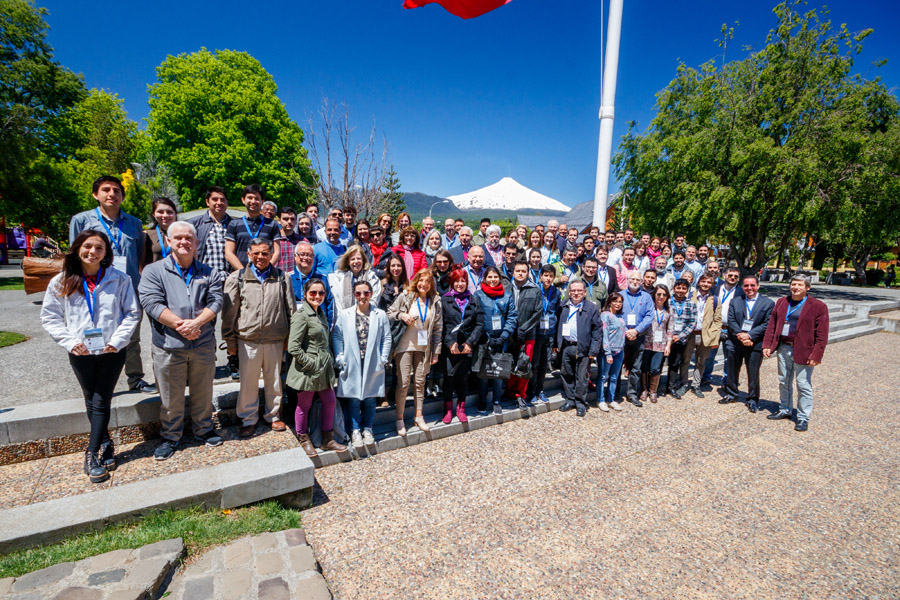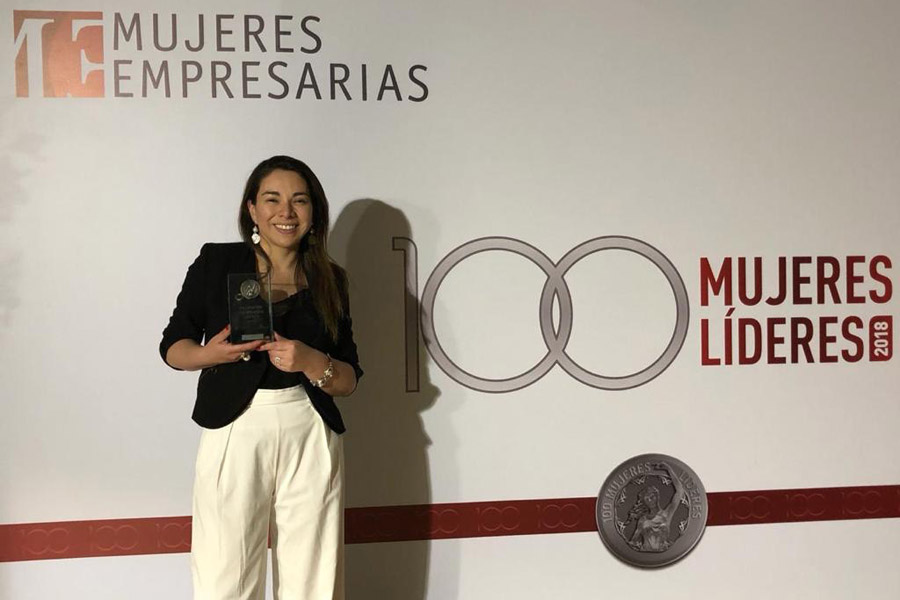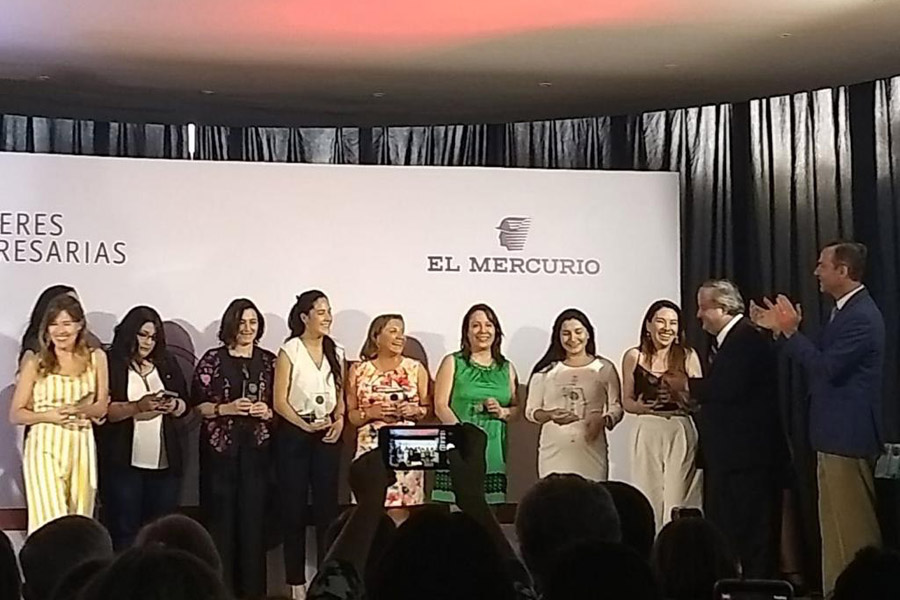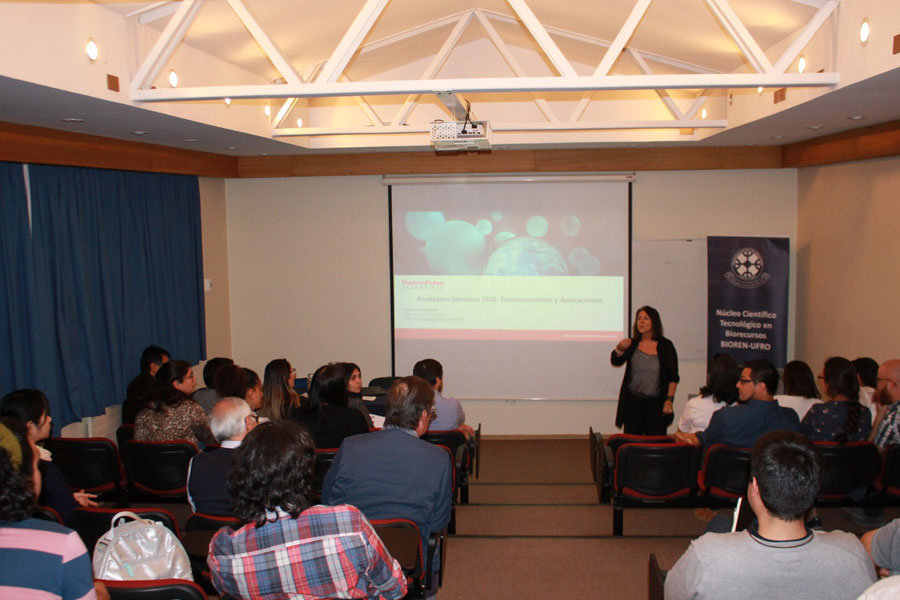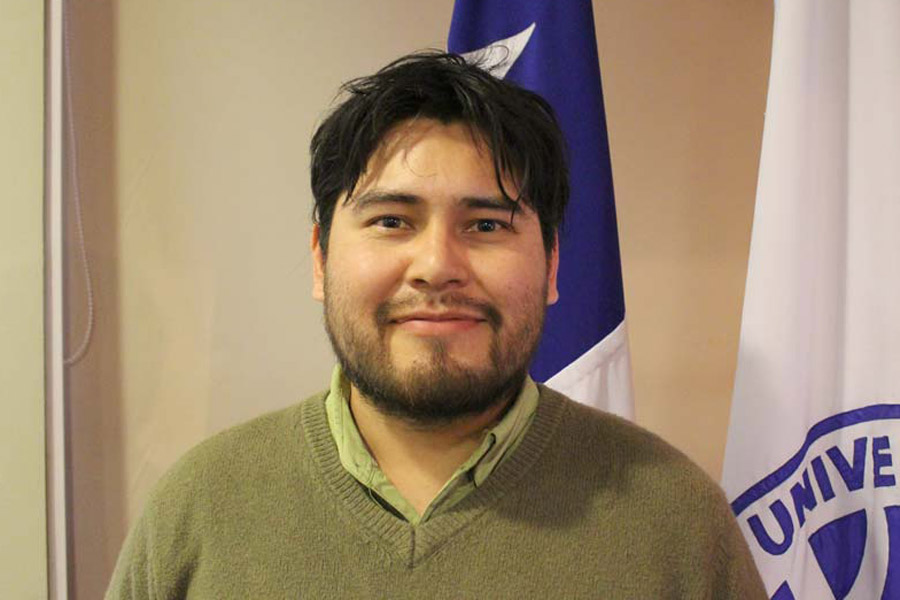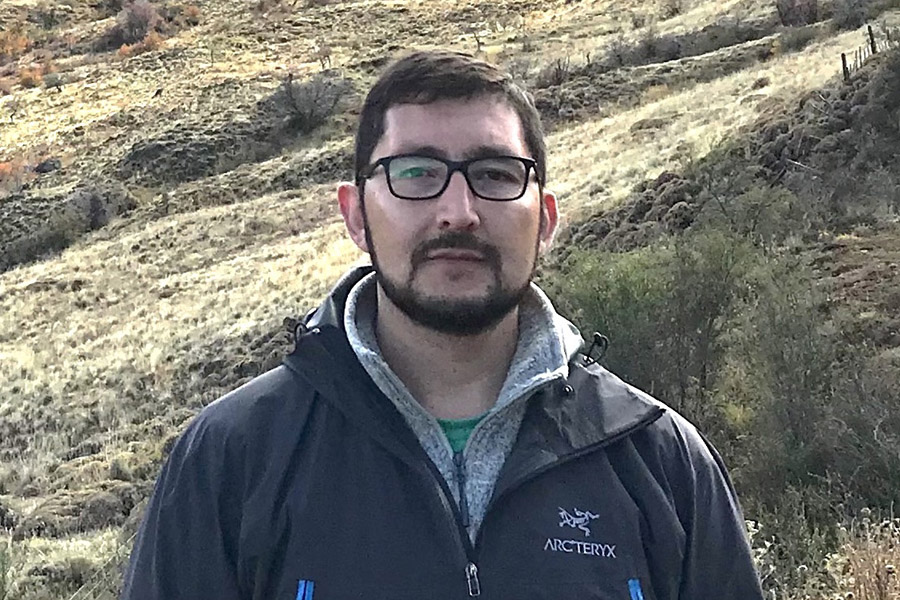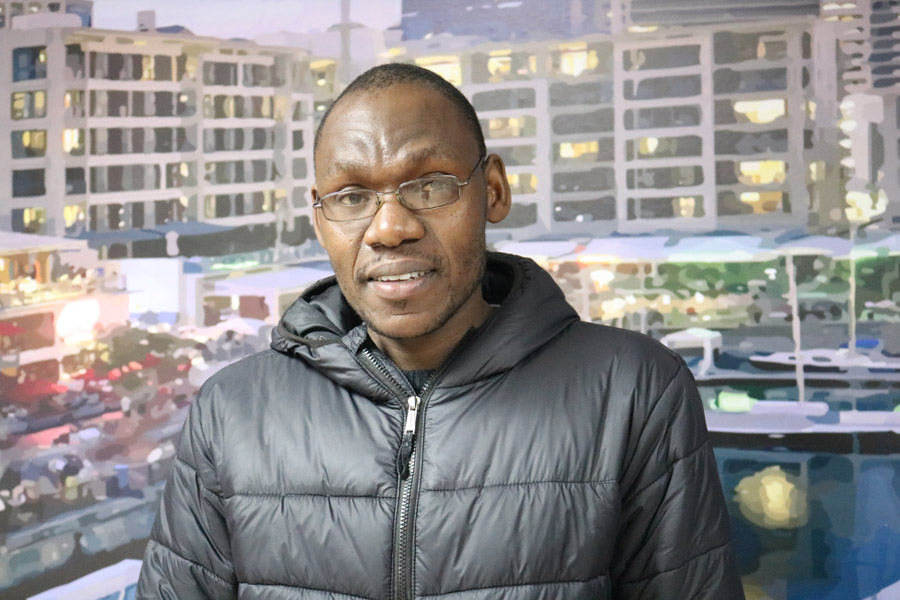|
The XVI Latin-American Conference of Analysis by X-ray Techniques (SARX 2018) and the VI. Conference on Medical Physics at La Frontera (JFMF 2018) were the two events that took place simultaneously and brought hundreds of researchers, teachers and undergraduate and postgraduate students from Chile and other countries together in the Araucanía Region. |
“Science starts with actions”. With this in mind, Dr. Rodolfo Figueroa, researcher at the Department of Physical Sciences of the Universidad de La Frontera, assumed the challenge of organizing and developing two parallel international events for the dissemination of science regarding x-ray techniques and medical physics. The XVI. Latin-American Conference of Analysis by X-ray Techniques (SARX 2018) and the VI. Conference on Medical Physics at La Frontera (JFMF 2018) were the two events that took place simultaneously and brought hundreds of researchers, teachers and undergraduate and postgraduate students from Chile and other countries together in the Araucanía Region. From November 6 to 9, the Pucón Campus of the UFRO was the headquarter of both events where they presented different contributions to the development and use of x-ray techniques in different industries and fields, such as mining and medicine, apart from other issues linked to medical physics. “Both congresses are related in some way. This is why we wanted to do them in parallel, in order to create links and the exchange of experiences between the participants and, on this occasion, with a main focus on medical physics,” Dr. Rodolfo Figueroa pointed out and added that the closing ceremony of both events was held on November 7, a date that has not been chosen randomly, since it is the International Day of Medical Physics. The structure of both events was similar, with conferences, oral presentations and poster presentations, among other activities oriented towards the update of knowledge and exchange of experiences between the participants. “The field of medical physics is relatively small compared to the other areas of physics or medicine and, although it has been existing for a lot of years, it is not quite known by the general public and even by a lot of professionals in the medical field, unless they have had the opportunity to interact or collaborate with medical physicists,” he explained. In this regard, he added: “These events are extremely important in order to help each other, especially in countries with low resources, where the profession is being developed through education as well as technical applications, scientific development and the development of applications,” Dr. Yakov Pipman, member of the American Association of Physicists in Medicine, confirmed. Dr. Ignacio Queralt of the Spanish National Research Council was also present in Pucón and said: “The interaction between scientific fields always requires progress in our knowledge, and synergistic activities between different disciplines always help. It is important that the level of education and research go hand in hand with the young professionals, and events like this one help us to fulfill this purpose.” It is worth stressing that within this strategy of promoting the early interest and training of specialists in applications of x-rays by bringing together experts and students, the International Centre for Diffraction Data (ICDD) supported the participation of students from different countries by providing 12 scholarships that covered the accommodation, as well as the Vice-rectorate for Academic Affairs of the UFRO, which provided 10 undergraduate students with scholarships that covered the inscription fee, and the Master´s Program in Medical Physics of the UFRO, which provided a similar benefit to its students. E-POSTERS One of the traditions at this kind of events is that different groups of the participants present a part of their research or the results in the form of a scientific poster. Instead of the traditional presentation of these posters, the organizing committee introduced an innovation by making use of technology in order to present each poster. This is why, on this occasion, the poster presentation gained special attention. The e-posters have been presented on four 55 inch screens that have been mounted in a vertical position on 1.20m high pedestals that have been especially made for this occasion and will be available for similar events at the university in the future. Written by: Daphne Bormann
Faculty of Engineering and Science |
|
The Businesswomen Foundation and the newspaper El Mercurio acknowledged the contribution of Valentina Villa Urra, creator of a technological tools startup for educational processes, which has been supported by the business incubator of the UFRO. |
On November 27, the Businesswomen Foundation, the newspaper El Mercurio and the TV station TVN published the names of the “100 leading women in Chile” in order to acknowledge the contribution and leadership of businesswomen, executives, authorities, artists, academics, entrepreneurs, philanthropists, sportswomen and social examples from all over Chile, who have been chosen by a jury out of over 600 candidates. On this occasion, the jury, which was made up of ministers and outstanding businessmen and women, acknowledged Valentina Villa Urra, an entrepreneur supported by the business incubator Incubatec of the Universidad de La Frontera and founder of the platform AEDUC, which sells technological solutions for the improvement of educational processes in educational establishments in the Araucanía Region and other regions through a test simulation software and data that favors the teaching process for directors, directors of Pedagogical Technical Units and teachers. “I feel honored that the progress and accomplishments I achieved as a female entrepreneur, especially in the Araucanía Region where we started our visionary work seven years ago with Incubatec-UFRO, and the fact that I am one of just a hand full of women who are leading technological projects at the national level, have been acknowledged. Now, our challenge is to keep innovating, with new tools we will put on the market in order to complement the assessment system, in order to keep offering solutions for the improvement of the education of our clients,” said the educational psychologist Valentina Villa, who participated in the award ceremony that was chaired by Cecilia Morel, the First Lady of the Republic. Incubatec-UFRO emphasized the acknowledgement of the entrepreneur who reached out to the business incubator quite some time ago to ask for advice regarding her business idea, and who now has a long list of clients with about 80 educational establishments in the country. She built her business with capital that has been co-financed by the UFRO and CORFO. It is worth mentioning that the business incubator of the UFRO has been acknowledged by CORFO for three years in a row now, for having the portfolio with the highest private capital and sales in the country. Incubatec also was in eighth place in the category World Top Business Accelerator Linked to University in the worldwide ranking of the World Incubation Summit of UBI Global in Toronto and in first place at the Latin-American level. Written by: Communications Office
|
|
The FONDEQUIP Project of CONICYT allowed the UFRO to acquire a Sanger Sequencer (genetic analyzer, model 3500) for bioprospecting of organisms in extreme environments in Chile that will allow the NEXER project to continue research in the field of molecular biology. |
It is a positive impulse for scientific research at the Universidad de La Frontera and for its Scientific and Technological Bioresource Nucleus (BIOREN) and the Network for Extreme Environment Research (NEXER). They were awarded with a FONDEQUIP project (EQM170171) that allowed BIOREN to be equipped with the latest technology.
“This equipment is a very useful and versatile tool for microbiology, as well as for research in the fields of cancer, biomedicine, engineering, and molecular biology. It will be available immediately, for different kinds of use, for the group of researchers who are part of BIOREN and the UFRO,” Dr. Milko Jorquera, professor at the Department of Chemical Science and Natural Resources of the UFRO, said, and commented that the equipment will be necessary to work in molecular biology and biotechnology. It will also put a focus on innovation regarding the NEXER Project, which is led by the Universidad de La Frontera. Dr. Maria de la Luz Mora, director of BIOREN, is also part of the challenge. She explained that the Sanger Sequencer 3500 will “strengthen the ohmic science and its scientific processes for undergraduate and postgraduate students that are related to this field, but mainly, it will strengthen the link with the productive sector, because it is an equipment that has to be handled directly, with versatile fields of use, and low-cost applications.” This translates into concrete results, such as animal genotyping or forensic medicine, among other progresses. “The UFRO started to grow when it got in contact with the productive sector and, in this context, we have to keep participating in services which are the basis for applied projects and which allow us to achieve a better link and efficiency regarding the necessities of the community, with a more specific analysis, which bioresources is working on,” the BIOREN-UFRO researcher explained. The Network for Extreme Environment Research, NEXER, is a network of three Chilean universities (U. de Antofagasta, U. de Magallanes and U. de La Frontera) and they are developing interdisciplinary research in genetic
Written by: Communications Office
This email address is being protected from spambots. You need JavaScript enabled to view it. |
|
To study, analyze and even predict landslides in the Center-South area of Chile are some of the aims of this new alliance of the Universidad de La Frontera. What happened in Villa Santa Lucía and Petrohué will be a reference for the study. The investment exceeds 630 thousand USD and the project will take 4 years. |
The Andes and the Himalayas will be under the same spotlight. And although both mountain ranges are separated by thousands of kilometers, both have something in common regarding their behavior, what alarms the group of UFRO researchers and the Institute of Mountain Hazards and Environment of the Chinese Academy of Sciences in China. It is an unprecedented alliance between the Faculty of Agricultural and Forestry Science and the Faculty of Engineering and Science, represented by Dr. Marcelo Somos and Dr. Ivo Fustos, together with Chen Ningsheng of IMHE and CAS, who are preparing themselves for the beginning of an ambitious research project with the objective of improving the art of prevention of and adaption to natural disasters. The project includes the study of cascade effects, incidents in the past, the understanding of mechanisms that lead to danger, and the proposal of new methodologies and technologies in order to improve the resilience and adaptability. In simpler terms, they will carefully examine the landslides occurred in nearby areas of the Andes and the Himalayas. But what do these two massifs have that could be interesting for the researchers? The answer comes from Dr. Fustos: “The landslides in both massifs are caused by subduction processes, which is when the oceanic plate sinks and slips under another continental plate. That’s when, although the angle of subduction in the Himalayas is lower compared to the Andes, both of them register landslides.” This is exactly what the scientists want to find out. Why does it happen, how often, which is the massifs’ history and, above all, how to predict an event like that in order to prevent, especially in the nearby villages and towns. “We are going to compare the areas in China and Chile, where landslides with similar characteristics have happened in the past, in order to understand the mechanisms that are causing this kind of events,” Dr. Somos explained. In December 2017, the village Santa Lucía of the commune Chaitén in the Los Lagos region was surprised and swept away by a flood caused by landslides, while three weeks after that another event like this occurred in the same region and swept away the road between Ensenada and Petrohué. Both incidents are references that will be compared, for example, to what happened in the area of Yigong in April 2000, when a rockslide travelled eight kilometers downstream in just ten minutes. “This is a comparative study with which we aspire to find new ways of monitoring and new knowledge to decipher these happenings, and to understand the main control factors. We will also generate methodologies that will allow a future joint cooperation in the search for funding for the implementation of solutions,” the researchers concluded.  Written by: the Rector’s Office Written by: the Rector’s Office |
|
His name is Alfredo Mabica and he is a postgraduate student in the Master’s Program in Education at the Universidad de La Frontera. After an intensive preparation at the Language Coordination Center, CODI-UFRO, he developed a very good command of the Spanish language and now he is waiting for the results of the international accreditation exam at the Instituto Cervantes in Spain. |
Chile, and especially Temuco, were unknown territories for Alfredo Mabica who comes from Mozambique in Africa and has been working as a chemistry teacher at a secondary school when he received the news that he was chosen from 15 applicants to receive the scholarship “Nelson Mandela”, which the Chilean government offers to strengthen the training of human capital through Master’s Programs at different universities. Faithful to his vocation as a teacher Alfredo arrived at the Universidad de La Frontera, thanks to the coordination of the International Affairs Office, in order to join the Master´s Program in Education, an experience the Mozambican student sees very positive because of the learning quality, and because of which it turned into a necessity to improve his Spanish language skills, although he already understood vaguely, since it is very similar to his native language, which is Portuguese. “At CODI they helped me a lot to improve my Spanish language skills. It was difficult at the beginning, but necessary for understanding the teachers and my postgraduate classmates,” Alfredo, who also went through a rough process of acclimatization in his first international experience, because of the cold climate and rain of the south, commented. Margot Godoy, director of the Language Coordination Center, which is part of the Vice-rectorate for Undergraduate Affairs, explained that this action that emanated from the collaborative link with the Academic Office for Graduate Studies permitted Alfredo to take part in an intensive Spanish program that was considered by the “Nelson Mandela” Scholarship with two hours of Spanish per day during the first semester, for being able to pass Spanish level B1, which is a requirement for international students at the UFRO. “It was rewarding to see him study. We saw the advances in him and the necessity of learning the Spanish language well for getting an international certificate. He got prepared for the DELE exam of the Instituto Cervantes at the beginning of October, being the first exchange student who takes this exam, and we are expecting good results,” Margot Godoy explained. While he is waiting for the results of the exam that accredits his Spanish language skills, a certificate provided by the Ministry of Education and Professional Training in Spain, Alfredo continues with his postgraduate studies at the UFRO with the objective of applying the contents he learns at this prestigious Chilean university in the future and, why not, of teaching the Mozambican students the Spanish language.
|





